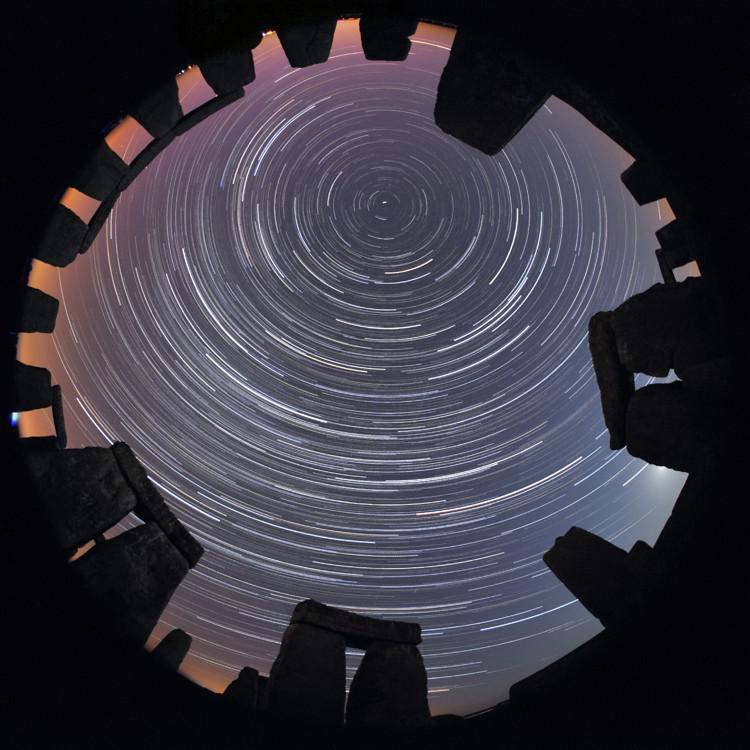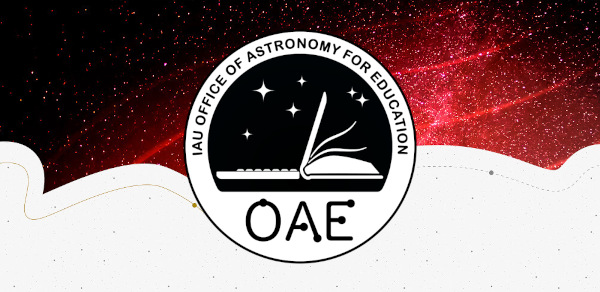This page describes an image Stone Star Circles, Startrails above Stonehenge, by Till Credner, Germany
Image caption:
Second place in the IAU OAE Astrophotography Contest, category Star trails.
Astronomy is one of the oldest (if not the oldest) of the sciences, and as such has connection to various cultures over millennia. This image in a way conveys this relationship by being contextualised in Stonehenge. There is much research into what astronomers call archeoastronomy sites, and how they connect to the sky (for example, seasons, phases of the moon and much more). Civilizations across time and from all over the world have their own views and interpretations of what they see in the sky, and this has been tied not only to culture but also to the people’s day-to-day and seasonal activities. The “concentric circles” which are often referred to as “star trails”, are the result of the apparent motion of the sky, which is in reality due to the rotation of the Earth on its axis. The small dot appearing towards the top center of the image is Polaris – The North or Pole Star. Polaris is only visible to observers in the Northern latitudes. The height of the Pole Star can be used to infer the observer’s actual latitude. Stonehenge is located at around 51° North. This image is taken from one of the most notable ancient sites in the world, brings us back in time, and makes us wonder about the stories told by the people that lived in that place many millennia ago.
Scroll to captions in other languages
Image credit:
Till Credner/IAU OAE
DOI: 10.5281/zenodo.5371591
Related glossary terms:
Circumpolar Stars
, Star Trail
Categories:
Naked Eye Astronomy
Image license: Creative Commons Attribution 4.0 International (CC BY 4.0) Creative Commons Attribution 4.0 International (CC BY 4.0) icons
The media file captions presented on the OAE website were written, translated and reviewed by a collective effort from the OAE, the OAE Centers and Nodes, the OAE National Astronomy Education Coordinators (NAECs) and other volunteers. You can find a full list of credits for our translation project here. All media file captions are released under a Creative Commons CC BY-4.0 license and should be credited to "IAU OAE". The media files themselves may have different licenses (see above) and should be credited as listed above under "credit".
Captions in Different Languages:
Image caption: Secondo posto al concorso di astrofotografia IAU OAE, categoria Scie stellari.
L'astronomia è una delle scienze più antiche (se non la più antica) e come tale è legata a varie culture da millenni. Questa immagine trasmette in un certo senso questa relazione, essendo stata scattata a Stonehenge. Molte ricerche sono dedicate a quelli che gli astronomi chiamano siti di archeoastronomia e sul loro legame con il cielo (ad esempio, le stagioni, le fasi lunari e molto altro). Le civiltà di tutto il mondo e di tutti i tempi hanno una propria visione e interpretazione di ciò che vedono nel cielo, legata non solo alla cultura ma anche alle attività quotidiane e stagionali delle persone. I "cerchi concentrici", spesso chiamati "scie stellari", sono il risultato del movimento apparente del cielo, che in realtà è dovuto alla rotazione della Terra attorno al suo asse. Il piccolo punto che appare in alto al centro dell'immagine è la Stella Polare. La Stella Polare è visibile solo agli osservatori dell'emisfero boreale. L'altezza della Stella Polare rispetto all'orizzonte può essere utilizzata per dedurre la latitudine effettiva dell'osservatore. Stonehenge si trova a circa 51° Nord. Questa immagine, scattata in uno dei più importanti siti antichi del mondo, ci riporta indietro nel tempo e ci fa pensare alle storie raccontate dalle persone che vivevano in quel luogo molti millenni fa.
Image credit: Till Credner/IAU OAE
Related glossary terms: Scia stellare , Stelle circumpolari Caption translation status: Approved by a reviewer
Caption translators: Giuliana Giobbi, Francesco Salvestrini
Caption reviewers: Rosa Valiante, Rodolfo Canestrari









